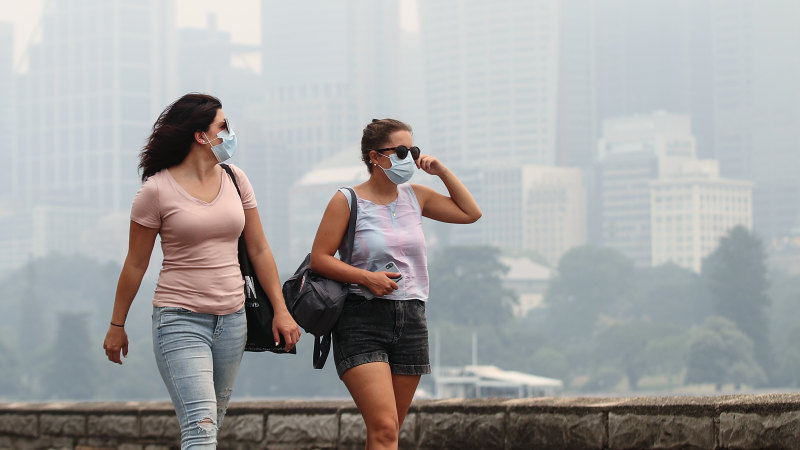
PM2.5 are particles with a diameter of 2.5 micrometres or less – or about 3 per cent the width of a human hair – small enough penetrate deep into the lungs and bloodstream. The main global sources of this dangerous fine particle pollution is smog from traffic, industry, and bushfires.
In 2019, Sydney residents were exposed to a record 81 days of hazardous, very poor or poor air quality – more than the combined total for the previous 10 years. Air quality is deemed "poor" in regards to PM2.5 when it reaches 25 µg/m3 – or 100 on the NSW Department of Planning, Industry and Environment's air quality index.
Study lead author Kazuaki Negishi, from the University of Sydney School of Medicine, said despite recent concerns about rising PM2.5 levels, Australian residents are "blindly" assuming air quality is safe at levels below 25 µg/m3, when there is really "no safe level" of PM2.5 pollution.
Professor Negishi said the DPIE index indicating air quality may be "fair", "good" or "very good" at thresholds above zero and below 25 µg/m3 "might give us false reassurance" – and let polluters off the hook.
Loading
Researchers were unable to identify a safe threshold for the pollution, he said, and suggested existing standards need to be re-evaluated both in Australia and globally, while authorities should urgently shift the focus to reducing pollution levels.
"It might not be a good idea to continue to seek [a new] threshold, but try to continuously improve our air quality. If a threshold exists, it should be very, very close to zero," Professor Negishi said.
Australian Medical Association vice-president Chris Zappala said the study "tells us what we would have thought intuitively to be true" and was able to show "very small increases" in risk due to the enormous sample size.
But he stressed that the risk remains very low, mostly affecting elderly people rather than the young and healthy.
Loading
Dr Zappala said while the study shows an association between PM2.5 pollution and cardiac events, more research is needed to establish causation and formulate a response.
"If we see trends are emerging, we have got to understand why they’re emerging and get to the heart of the problem so we can solve it," he said.
"I think most people would agree that’s what happened in Australia over the last few months is fairly unique, and if we’re going to understand the health effects better we will need to research and understand and unravel what's happening to patients' patterns of disease."
Jenny Noyes is a journalist at the Sydney Morning Herald. She was previously a writer and editor at Daily Life.
Most Viewed in National
Loading
Bagikan Berita Ini

















0 Response to "'No safe level': Study links PM2.5 pollution to increased risk of cardiac arrest - The Age"
Post a Comment